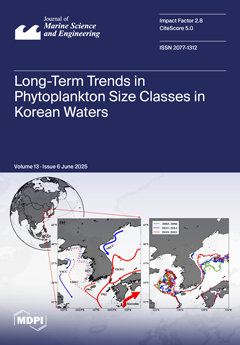Accurate predictions of beach user numbers are important for coastal management, resource allocation, and minimising safety risks, especially when considering surf-zone hazards. The present work applies an XGBoost model to predict beach attendance from automatically video-derived data, incorporating input variables such as weather,
[...] Read more.
Accurate predictions of beach user numbers are important for coastal management, resource allocation, and minimising safety risks, especially when considering surf-zone hazards. The present work applies an XGBoost model to predict beach attendance from automatically video-derived data, incorporating input variables such as weather, waves, tide, and time (e.g., day hour, weekday). This approach is applied to data collected from Biscarrosse Beach during the summer of 2023, where beach attendance varied significantly (from 0 to 2031 individuals). Results indicate that the optimal XGBoost model achieved high predictive accuracy, with a coefficient of determination (
) of 0.97 and an RMSE of 70.4 users, using daily mean weather data, tide and time as input variables, i.e., disregarding wave data. The model skilfully captures both day-to-day and hourly variability in attendance, with time of day (hour) and daily mean air temperature being the most influential variables. An XGBoost model using only daily mean temperature and hour of the day even shows good predictive accuracy (
= 0.90). The study emphasises the importance of daily mean weather data over instantaneous measurements, as beach users tend to plan visits based on forecasts. This model offers reliable, computationally inexpensive, and high-frequency (e.g., every 10 min) beach user predictions which, combined with existing surf-zone hazard forecast models, can be used to anticipate life risk at the beach.
Full article





